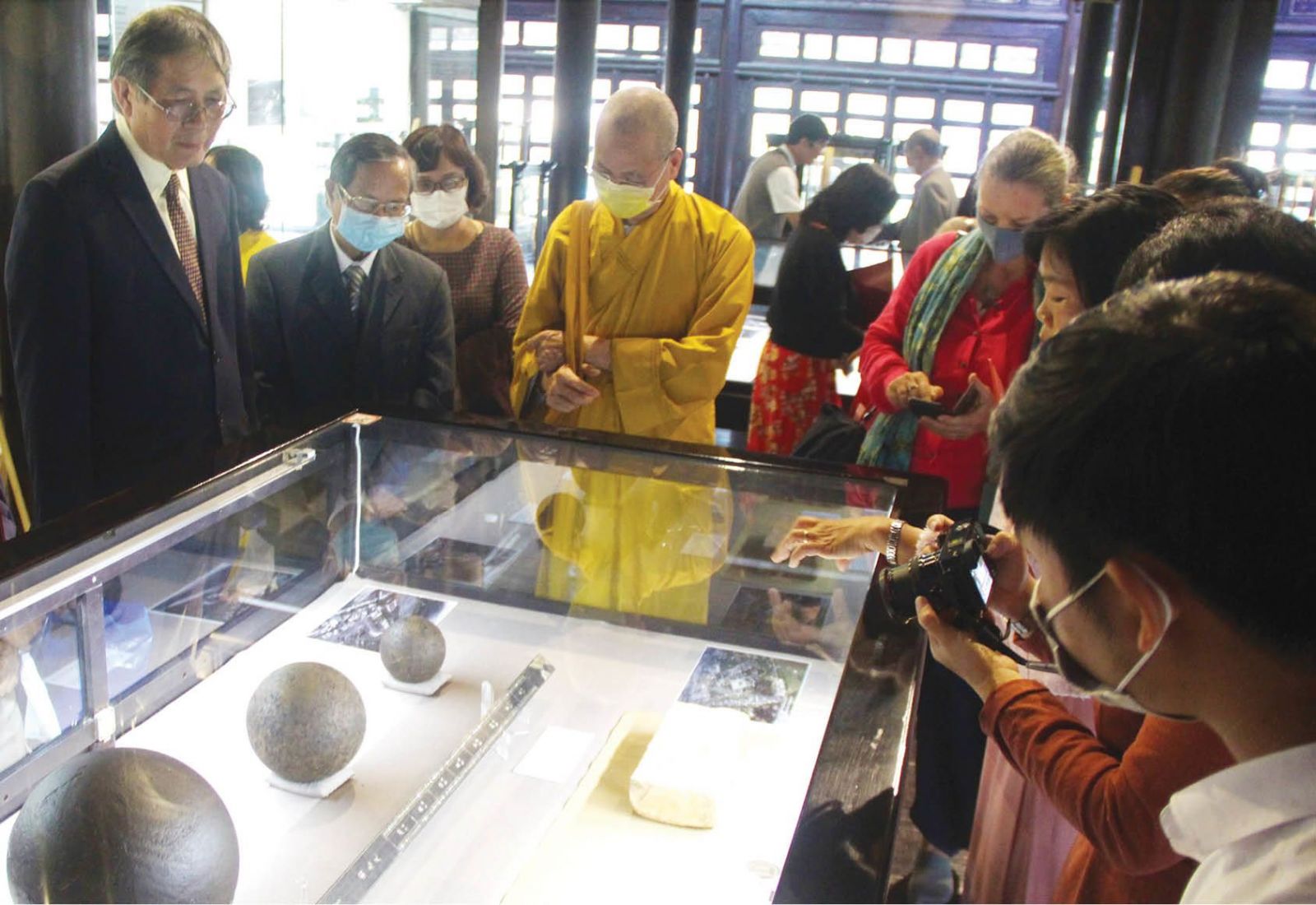More than 11,000 artifacts under management
Hue Museum of Royal Antiquities was established in 1923, with the original appellation of Musée Khai Dinh (Khai Dinh Museum) - one of the first museums in Vietnam.
This is the place to preserve and exhibit ancient Hue antiquities, most of which originated from the Nguyen court such as the collection of porcelains, collection of enamel, collection of royal costumes, and collection of seals, collection of musical instruments used in sacrifice rites, collection of mirror paintings, collection of gilded and inlaid wood furniture, collection of cannons during the reign of the Nguyen Lords and Nguyen Kings. In addition, the museum also has a unique and diverse collection of Champa sculptures.
The museum's collections reflect the material life, political rituals, and ideology of the aristocracy, kings, and mandarins under the Nguyen Dynasty. This is reflected in the royal costumes, imperial porcelains, interior decoration furniture, items for daily life, and rituals from many different materials: gold, silver, copper, bone, ivory, enamel, ceramics, wood, cloth, paper, etc.

Many exhibitions and shows of artifacts took place right at Hue Museum of Royal Antiquities, attracting the broad public to enjoy and learn about
According to the Hue Museum of Royal Antiquities representative, the unit is currently managing over 11,000 artifacts. In addition to being displayed at the museum space at 3 Le Truc Street, these artifacts are on view in many monuments of the Complex of Hue Monuments.
Aside from a number of fixed spaces such as shrines and temples, the exhibition is organized by the museum in rotation, according to each theme.
“Even at museums as well as monuments, we also regularly organize a number of shows and exhibitions to improve service to visitors. In addition, we increase the selection of antiquities relevant to the location, events, and characters to provide additional information for visitors," said Dr. Huynh Thi Anh Van - Director of Hue Museum of Royal Antiquities.
Head of Hue Museum of Royal Antiquities affirmed that there is no obstacle in managing a huge number of antiquities, but the difficulty is that the professional work has to be done in an unprofessional space. Ms. Van proved that the historical works themselves have to be used as a place of display, so it is impossible to influence, change or control the factors detrimental to the artifacts.
“In some positions, the rain causes mold, and the hot sun shines directly on the artifacts from the outside. To improve that, the problem is that there has to be an ideal space,” said Ms. Van, adding that most of the artifacts under management are over 100 years old.
Technology to serve the public applied
Notwithstanding many difficulties, Ms. Van said that with its assigned functions, in recent years the museum has fulfilled its responsibilities in preserving, promoting, and publicizing heritage and culture. Like many other areas, the museum has been updating technology for management and introducing heritage and culture to the public.
Since 2017, the museum has coordinated with other units to build software on phones to listen, view, and interact with artifacts. Recently, the museum has also applied technology to introduce animations of Nguyen kings right inside Long An Palace as well as patterns and designs on artifacts, etc.
This technology helps visitors visualize artifacts and characters more vividly. Besides, the museum is currently applying a number of new technologies to serve visitors.
Further, a number of shows and exhibitions are also digitized to put on online visitor service platforms. “The museum also aims for the strategy of the virtual exhibition but has not yet focused heavily because it desires visitors to reach Hue to visit directly. Virtual exhibitions are only suitable for certain periods such as the pandemic, but visitors are currently encouraged to arrive in Hue for local tourism development," said Ms. Van.
Mrs. Van added that the recent repatriation of two Nguyen Dynasty antiques, which are mũ Quan văn chánh nhất phẩm (a type of hat for the highest rank mandarin in the court) and áo Nhật Bình (a type of court dress for queens, concubines, and princesses under the Nguyen Dynasty), produced a very good effect and received considerable attention from tourists including many young tourists. As a result, those two artifacts in particular and thousands of Nguyen Dynasty artifacts in general have captured the attention and created a great spillover in publicity.
Story and photo: NHAT MINH